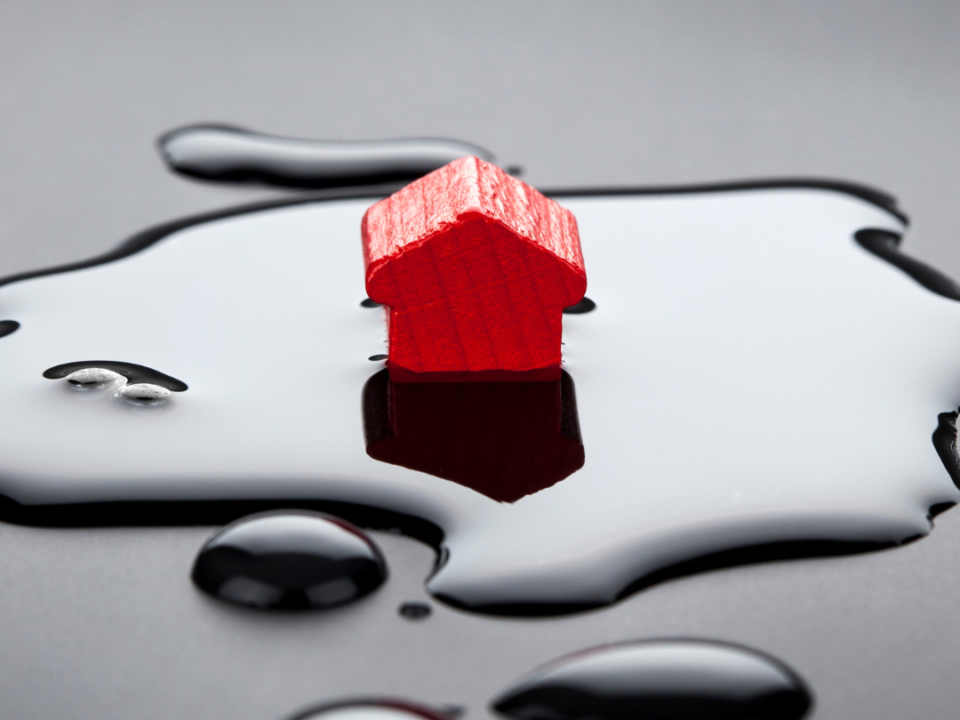
If you're one of the 90% of homeowners who renewed your policy just to find out your rates are hundreds of dollars higher than they were last year, you’re probably wondering how this happened. [2] Here are a few of the most common reasons your homeowners insurance rates went up.
1. Record-high inflation
In some cases, your insurer will increase your rates because of something within your control — for example, maybe your roof needs to be replaced or you filed a claim recently. But the fact of the matter is home insurance premiums are going up everywhere due to the surging cost of labor and construction materials thanks to supply chain issues and record-high inflation in 2021 and 2022.
Your rates are based heavily on how much dwelling coverage is in your policy — this is the part of your home insurance that pays to rebuild your home if it's damaged or destroyed. As rebuild costs continue to skyrocket due to inflation, homes are requiring higher dwelling coverage limits to keep up with the rising prices.
This has led to higher home insurance rates across the board, but the outlook is even more grim in areas that are already prone to natural disasters.
2. More extreme natural disasters
From worsening hurricane and wildfire seasons to unexpected cold snaps in Texas, the home insurance industry has experienced record-setting claim payouts and financial losses over the past few years. As a result, many insurance companies are increasing rates to pay for these losses and to ensure they don’t go bankrupt after future climate disasters.
Additionally, in states like California where catastrophic wildfire events are common, construction and labor costs tend to be higher in affected areas due to the increased demand and shortened supply.
So if you live in a high-risk area out West or in the South and your rates recently went up, you’re likely getting hit by both price inflation and the higher reconstruction costs where you live.
3. Your house is older and due for upgrades
Some of the most common home insurance claims are due to water damage after a burst pipe or roof leak. These are also among the most expensive types of home insurance claims. If your insurance company conducts an inspection at renewal and discovers your roof needs to be replaced or you need new plumbing or electrical work, it may increase your rates to account for the high risk of claims.
Average cost of home insurance by roof age
Here's the average annual cost of home insurance in the U.S. in 2022 based on the age of your roof:
Age of roof
National average rateNew roof | $1,739 per year
10-year-old roof | $1,859 per year
15-year-old roof | $1,898 per year
20-year-old roof | $1,913 per year
Methodology: National average rates are based on our analysis of home insurance premiums provided by Quadrant Information Services in March 2022 for ZIP codes in all 50 states plus Washington, D.C. for policyholders with different aged roofs.
4. Your insurance score went down
Another factor that determines your home insurance rates is your insurance score, which measures how statistically likely you are to file a claim. Carriers typically determine your insurance score by combining your credit score and claims history, among other factors.
A lower insurance score generally means higher premiums, so if your credit took a dip recently or you filed a claim or two in the last year, that may be the reason your homeowners insurance went up.
Average cost of home insurance after you file a claim
Here's the average annual cost of home insurance in the U.S. in 2022 based on different claims histories:
Number of claims
National average rate0 claims | $1,933 per year
1 claim | $2,101 per year
3 claims | $2,916 per year
5 claims | $4,407 per year
Methodology: National average rates are based on our analysis of home insurance premiums provided by Quadrant Information Services in March 2022 for ZIP codes in all 50 states plus Washington, D.C. for policyholders with different claims histories.
5. Attractive nuisances
Insurance companies consider swimming pools, trampolines, and even house pets as “attractive nuisances” since they attract children onto your property and put them at risk for injury. If you install a pool or add a new four-legged friend to your family, your insurance company may increase your rates to offset the higher probability of expensive liability claims.
My home insurance rates went up. What do I do now?
If you notice an increase in coverage amounts or higher rates on your insurance policy at renewal, contact your insurance agent and ask about the changes. They’ll most likely give you a reason and may suggest tangible ways to lower your rates, including increasing your deductible or checking to see if you’re eligible for any discounts.
3 ways to lower your homeowners insurance rates
If you noticed your home insurance rates went up recently and you’re wondering if there’s anything you can do to get them back down, you’ll be relieved to hear that yes, there is.
Following the steps below is a good starting point as you look for ways to save on homeowners insurance.
Ask about discounts
If the discounts section on your policy’s declarations page is more or less empty, make sure to ask your insurance company if there are any you are currently eligible for. Some popular discounts include:
- Multi-policy discount: If you have two or more policies with the same insurer, like home and auto insurance, this can trim anywhere from 15% to 30% off premiums, depending on your insurer.
- Claim-free discount: Some carriers will provide discounts if you go a certain number of years without filing a claim.
- Protective devices discounts: If your home is fitted with deadbolts, smoke detectors, fire extinguishers, fire and burglar alarms, or other protective features, most insurers will reward you with lower rates.
- First-time homebuyer discount: Most home insurance providers offer discounts to both new homebuyers or owners of recently built homes.
- Senior citizens discount: If you’re 55 or 60 and older, your insurer may offer up to 10% off your premiums.
- Loyalty discount: If you’ve been a policyholder with the same insurance company for five years or more, you may be eligible for a loyalty discount of up to 10% off.
Increase your deductible
Increasing your policy deductible generally lowers your home insurance premiums. If your rates recently went up and your deductible is currently set to $1,000, consider choosing a higher deductible to get those rates back down. If your home doesn’t face many hazards or you’ve owned your house a while without having to file a claim, then it may be in your best interest to choose a high-deductible policy.
Re-shop your homeowners' insurance
You should consider re-shopping your home insurance every year to make sure you aren’t missing out on better coverage or rates with a different insurance company. Policygenius makes it easy to compare affordable home insurance options from multiple insurers — all for free.




